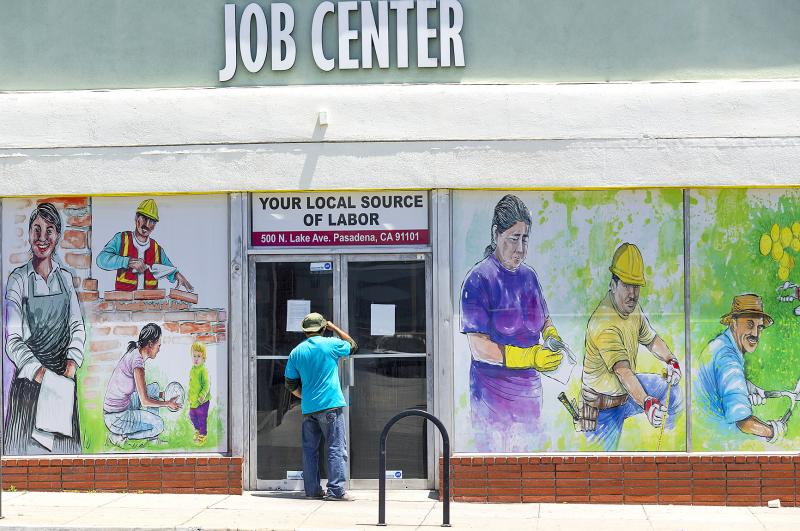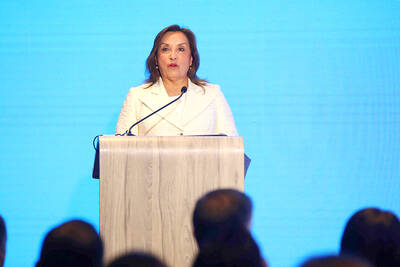To make good policy you should have at least a vague notion of what you are talking about.
However, when it comes to perhaps the biggest reform proposal around, we just do not. I am talking about a universal basic income (UBI), a system of unconditional cash payments to everybody in a given jurisdiction.
The case for a UBI runs as follows: It would reduce poverty, make people healthier and give them more dignity. It would also ease the transition of workers who lose their jobs to robots or artificial intelligence, so they can retrain for different careers. In general, it lets people bridge periods out of work or in bad jobs so they can invest in their own skills and re-enter the workforce at a higher level.

Photo: AP
To get out of a dead-end job, say, they might take a “sabbatical” for adult education. Or they could temporarily contribute in other valuable ways, for instance by homeschooling their children or caring for elderly parents.
Moreover, because a UBI would replace most or (as I would like) all legacy welfare systems, its cost need not be prohibitive.
Now the case against a UBI: It would devalue work as such and reward sloth. Without an existential need to work, why bother? A UBI would create a new and permanently dependent underclass, a lumpenproletariat of the Fourth Industrial Revolution. To provide the nectar that feeds these UBI drones, all those diligent worker bees who still have jobs would have to pay unacceptably high taxes.
This clash between cliches is what the debate has deteriorated to.
However, how, in fact, would most human beings respond to “free” money? We have not the faintest idea.
Lots of people have tried to find out, of course. Starting with Canada in the 1970s, various local, regional and national governments around the world have run experiments.
However, so far these have not yielded much useful information. Sometimes a new government took office and halted a research project or changed its parameters beyond recognition. Or the study was designed poorly.
UBI geeks were particularly disappointed that a Finnish project that began in 2017 was first changed, then stopped after only two years.
It, too, was not very well thought out — 2,000 Finns who were initially unemployed received a modest 560 euros (US$656 at the current exchange rate) a month and were compared against another group who continued to receive means-tested unemployment benefits.
To see the macroeconomic effect of a UBI, of course, you want to test it on a representative slice of the whole population, not just the jobless.
Nonetheless, as imperfect as the Finnish study was, it did debunk one assumption of UBI opponents. Getting unconditional payouts not only increased the well-being of the participating Finns, but also made them slightly more likely to find jobs. In short, they got healthier, but not lazier.
Now there is excitement about another research project getting started in Germany. It might finally get the parameters right. Almost 2 million people from all walks of life have already applied to be guinea pigs.
Starting next month, social scientists are to select two groups. One, consisting of 120 people, will get 1,200 euros a month, starting next spring and lasting three years. They will be compared against a control group of 1,380 who will be monitored, but will not get any cash.
The twist in this experiment is that the organizers are to look for “statistical twins.” So if among the 120 there is a 25-year-old pianist who lives in an urban metropolis, has five years of higher education and good health, she would have a doppelganger in the control group. So would the 40-year-old plumber from the countryside, the gig worker delivering Amazon packages, and so on.
By comparing these statistical twins over several years, said Juergen Schupp, the sociologist who leads the project, it should be possible to single out just the effects of the payments on people’s lives.
Eventually, they will even compare hair samples for clues about stress hormones. As usual in science, the results would not necessarily prove a positive — that a UBI turns us into entrepreneurs, for example.
However, they should be able to falsify bad arguments — that a UBI makes us lazy, perhaps.
Even this project, of course, will not try to answer every question. Which existing welfare services would a UBI replace? Would it extend even to migrants and temporary residents? How would it be financed?
However, it is a step in the right direction, and a reminder that policymakers in poor and rich countries alike need to keep an open mind.
We are indeed in the midst of a digital transformation that would destroy many old jobs and create many new ones, and we need structures that help people adapt.
As this year reminded us all, every now and then something like a pandemic-induced recession comes along, against which a UBI just might be an ideal policy tool. It would certainly help if we could answer some of the big questions.
Andreas Kluth is a columnist for Bloomberg Opinion. He was previously editor-in-chief of Handelsblatt Global and a writer for The Economist. He is the author of Hannibal and Me
This column does not necessarily reflect the opinion of the editorial board or Bloomberg LP and its owners.

CAUTIOUS RECOVERY: While the manufacturing sector returned to growth amid the US-China trade truce, firms remain wary as uncertainty clouds the outlook, the CIER said The local manufacturing sector returned to expansion last month, as the official purchasing managers’ index (PMI) rose 2.1 points to 51.0, driven by a temporary easing in US-China trade tensions, the Chung-Hua Institution for Economic Research (CIER, 中華經濟研究院) said yesterday. The PMI gauges the health of the manufacturing industry, with readings above 50 indicating expansion and those below 50 signaling contraction. “Firms are not as pessimistic as they were in April, but they remain far from optimistic,” CIER president Lien Hsien-ming (連賢明) said at a news conference. The full impact of US tariff decisions is unlikely to become clear until later this month

With an approval rating of just two percent, Peruvian President Dina Boluarte might be the world’s most unpopular leader, according to pollsters. Protests greeted her rise to power 29 months ago, and have marked her entire term — joined by assorted scandals, investigations, controversies and a surge in gang violence. The 63-year-old is the target of a dozen probes, including for her alleged failure to declare gifts of luxury jewels and watches, a scandal inevitably dubbed “Rolexgate.” She is also under the microscope for a two-week undeclared absence for nose surgery — which she insists was medical, not cosmetic — and is

GROWING CONCERN: Some senior Trump administration officials opposed the UAE expansion over fears that another TSMC project could jeopardize its US investment Taiwan Semiconductor Manufacturing Co (TSMC, 台積電) is evaluating building an advanced production facility in the United Arab Emirates (UAE) and has discussed the possibility with officials in US President Donald Trump’s administration, people familiar with the matter said, in a potentially major bet on the Middle East that would only come to fruition with Washington’s approval. The company has had multiple meetings in the past few months with US Special Envoy to the Middle East Steve Witkoff and officials from MGX, an influential investment vehicle overseen by the UAE president’s brother, the people said. The conversations are a continuation of talks that

Alchip Technologies Ltd (世芯), an application-specific integrated circuit (ASIC) designer specializing in artificial-intelligence (AI) chips, yesterday said that small-volume production of 3-nanometer (nm) chips for a key customer is on track to start by the end of this year, dismissing speculation about delays in producing advanced chips. As Alchip is transitioning from 7-nanometer and 5-nanometer process technology to 3 nanometers, investors and shareholders have been closely monitoring whether the company is navigating through such transition smoothly. “We are proceeding well in [building] this generation [of chips]. It appears to me that no revision will be required. We have achieved success in designing